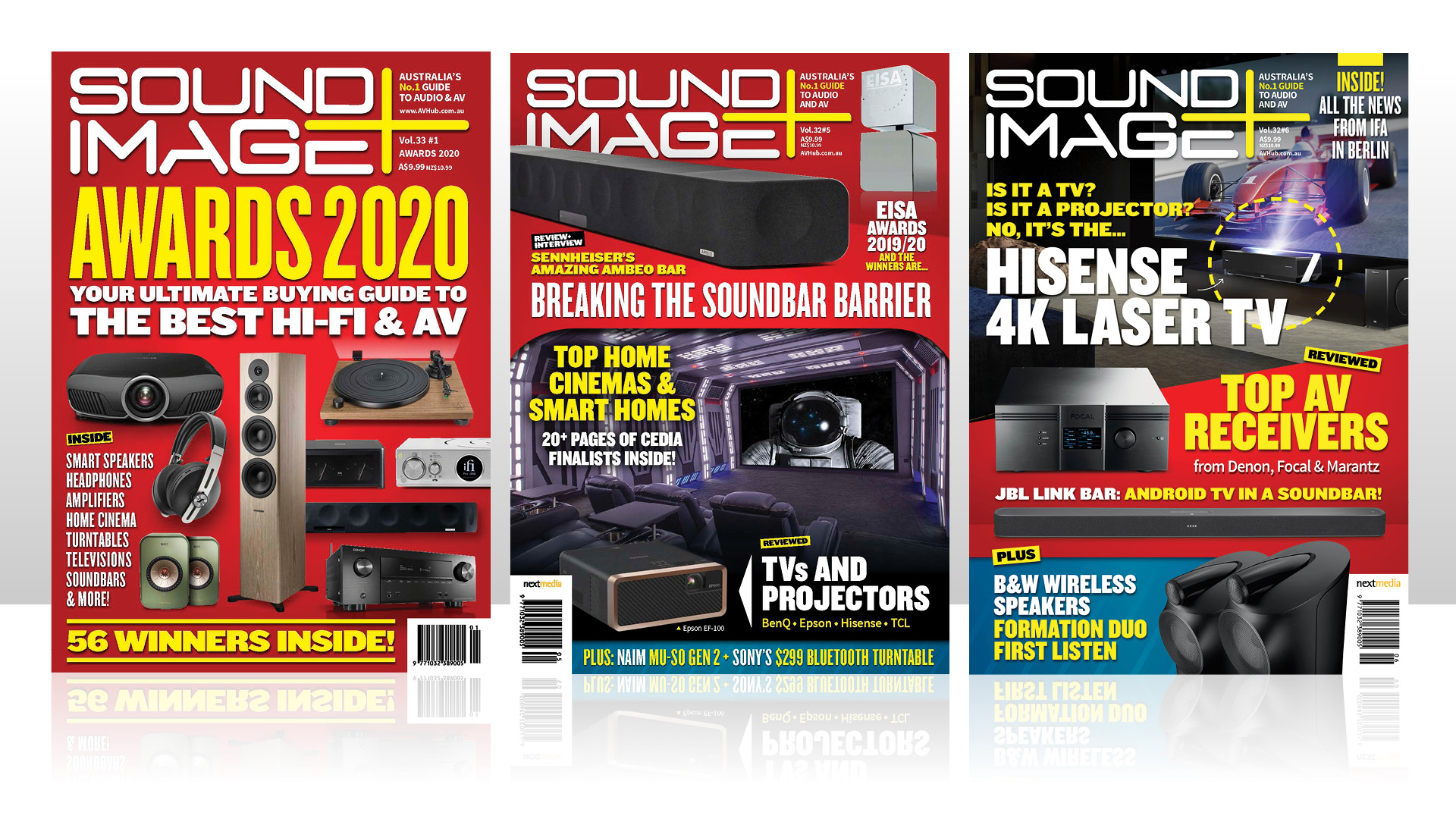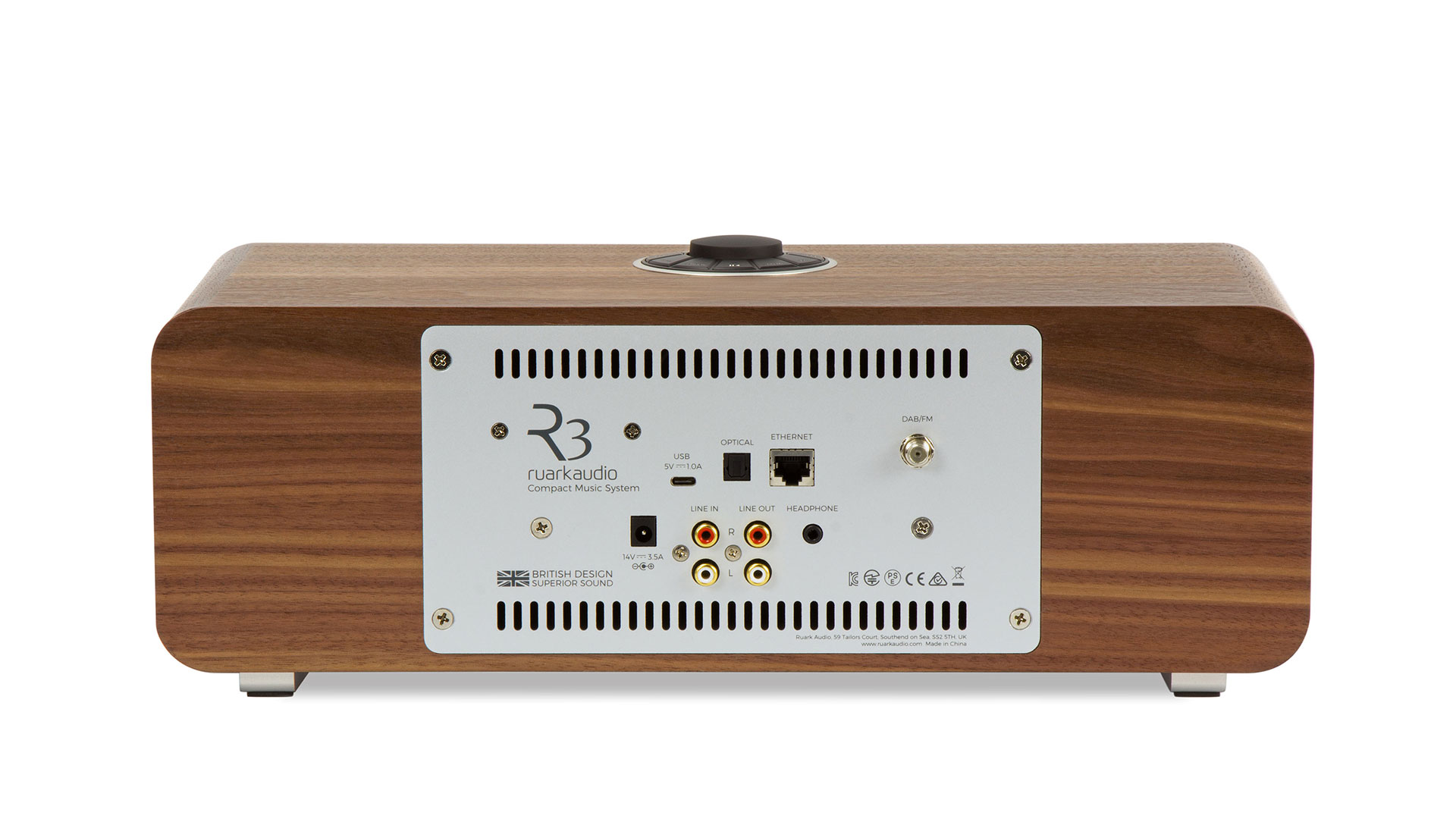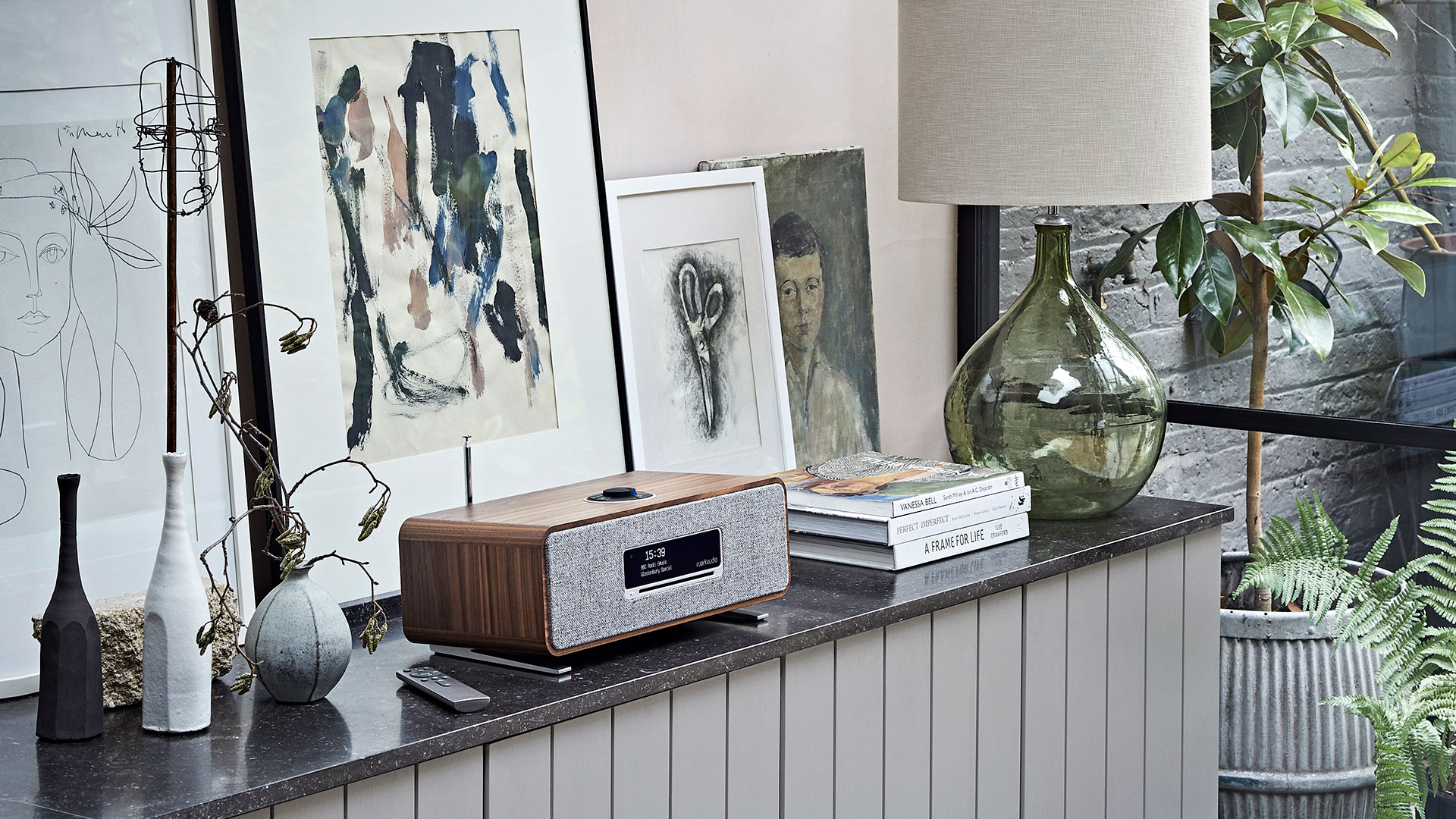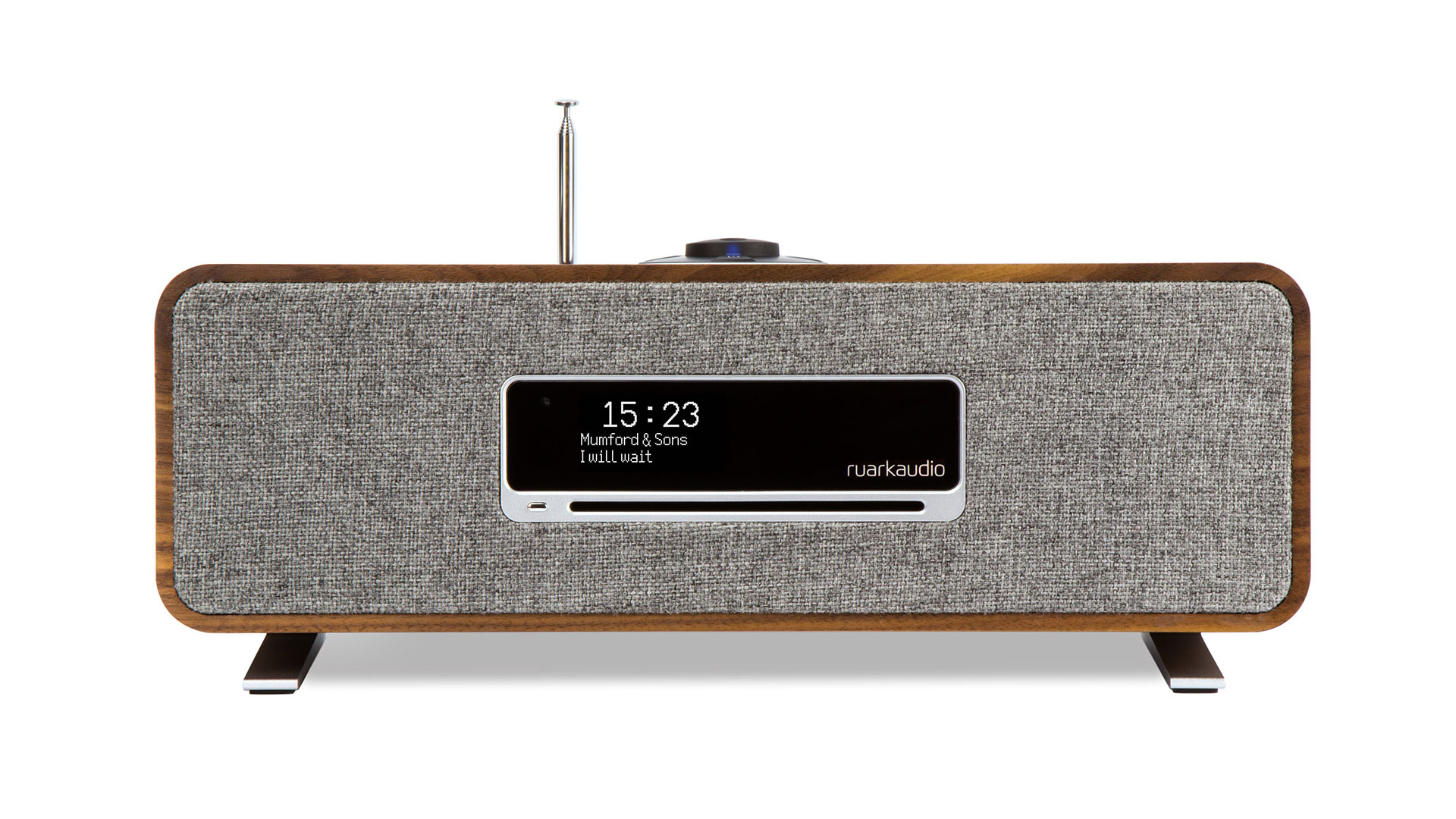Sound+Image Verdict
While we thought its radio sources need a little tonal attention, the highlights here are playback from CD, from streaming music services and Bluetooth.
Pros
- +
Compact music system
- +
Endless paths to music
- +
CD and streaming
Cons
- -
Edgy sound on radio sources
- -
Variable results for ‘3D audio’
Why you can trust What Hi-Fi?

This review originally appeared in Sound+Image magazine, one of What Hi-Fi?’s Australian sister publications. Click here for more information on Sound+Image, including digital editions and details on how you can subscribe.
We don’t recall a product ever ‘coming good’ during a review to the quite same extent as did the Ruark R3 Compact Music System. It positively alarmed us when we first turned it on. But by the end of our time with this streaming tabletop music system we were using it daily for pleasure as much as for assessment. Join us in our journey with this timeless design from a UK company which has made this genre of smart radiogram-like music system something of a specialty.
Build & facilities
The R3 is a table-top audio system (£629, $790, AU$1299) which stands some 42cm across and 17cm high, bringing together CD replay, reception of DAB+, FM and internet radio, streaming via network and Bluetooth (with aptX), Spotify Connect, Tidal and other music services… pretty much everything, in short, that the modern music world has to offer.
You can plug in additional sources – there’s one optical and one analogue input, also a minijack headphone output and a ‘line out’ at full level, so you could run the whole gamut of sources into a hi-fi amp or a recorder.
Ruark’s great skill is in offering this potentially overwhelming profusion of sources in a friendly box – old-style, you might even call it, with its grey cloth grille and walnut casing, though a more modern-looking soft-grey lacquer finish is also available.
On top is the company’s longstanding Rotodial for control, while a small infrared remote is also included, along with app control from a smart device. And if it’s going bedside, you can avail yourself of the useful alarm clocks, snooze and sleep timer functions.
Ruark’s other skill is sound quality. This is a company we can still remember of old as Ruark Acoustics, making fine British loudspeakers with thrusting names like Sabre and Swordsman through the 1980s and 1990s. Then in the 2000s when digital radio was trending, Ruark developed the little R1, which the UK’s Sunday Telegraph hailed as “the Aston Martin of DAB radios”.
Such was the R1’s success that traditional loudspeakers fell by the wayside (though “never say never”, says owner Alan O’Rourke), and the reinvented Ruark Audio now has a range of radio and streaming solutions, from the latest Mk4 version of the R1 ‘deluxe’ up to a large four-legged radiogram of the future, the highly desirable R7 Mk3.
The latest hi-fi, home cinema and tech news, reviews, buying advice and deals, direct to your inbox.
So Ruark has a heritage of hi-fi sound, and we’ve enjoyed many of its players in the past, so were looking forward to this new R3.

Setting up
We had no problems setting up the R3; we gave it Ethernet and attached the antenna required for radio reception; this may confuse newbies by flopping around loosely, but we knew from previous Ruark visits that there’s a special aerial spanner in the packaging for this very purpose!
We began our listening by sampling its skills with radio. We selected digital radio and, being fresh from the box, the R3 scanned Sydney’s airwaves and found some 70 available DAB+ stations all awaiting selection via a shuttle of the R3’s top Rotodial. And all were sounding pretty unpleasant – very spitty in the treble, artificial-sounding, with voices thin in their midrange content, and music lumpy in the bass.
We changed to internet radio – it was no better, indeed slightly worse on low-resolution stations. We were worried by this, to be honest: it was not the sound we expect from Ruark devices, which normally present a warm friendly radio sound.
We hastened to the tone controls through the menus. There are four elements to the tone controls: bass and treble adjustment, a loudness option which was ‘on’ by default, and – ah! – a ‘3D’ option. This 3D option was also on by default. Switching it off went a long way to removing the artificial spittiness from the radio sources.
We further tamed the treble by a few notches, left the loudness on, and kept the bass in its central position. This brought the radio sections back to what we’d expect from Ruark – full and friendly, just a teeny bit fizzy up top but no longer distractingly so.
The remote control has three large preset buttons, which are available separately for each source, so three for FM, three for DAB+, three for internet radio. You store them by simply pressing and holding the button when listening to a station.
But in fact there are 10 presets for each type of radio; you can access the rest by pressing and holding the ‘preset’ button then pressing the left-right buttons to reach presets 4 to 10. Recall them the same way, without the holding. It’s easy, versatile, and very useful.
App control
For those with less than 20/20 vision who can’t read the small lettering on the front display across the room for source selection (let alone the tinier menu options), there’s a handy free app available for control. This is Undok, the control app from Frontier Silicon, maker of the smart module within the R3.
We’ve long enjoyed Undok, and are pleased to see it back after an unexplained hiatus. Undok controlled the R3 effectively, though not entirely. For example, there’s access to bass, treble and loudness, but not the all-important ‘3D’ option, for which you’ll need to use the remote and/or Rotodial to switch on or off.
App quirk two: we tried to rename the R3, but it refused to change to ‘Ruark R3’... yet when we jokingly tried ‘Simon’, that was OK. Turns out that you can only pick a one-word name, e.g. Ruark.
App quirk three: the bass slider in the app was glitchy, advancing a few notches, then jumping back again, up then back – very odd.
But otherwise the app is very useful for local control, for switching sources, for saving presets. One tip for internet radio: if there’s a station you can’t find (our local community station, for example, was not listed), you can head to Frontier Silicon’s site https://smartradio.frontier-nuvola.net, set up an account, link your R3, ‘manage favourites’, and enter the URL manually. The station then appears under ‘My Favourites’. Nice flexibility!

Streaming

Drivers: 2 x 75mm NS+ full-range
Quoted power: 30W Class-AB
Inputs: RCA analogue, optical digital, USB-C, FM, DAB+ radio, Bluetooth (SBC, AAC, aptX), Wi-Fi/Ethernet, internet radio, Spotify Connect, Tidal, Deezer, Amazon Music, DLNA/UPnP
Outputs: line out, headphone minijack out
Dimensions: 420 x 220 x 167mm
Weight: 5.3kg
Radio listening completed, we switched to music streaming. For Spotify you use the Spotify app and point it at the Ruark for playback – we were pleased to find this works with free Spotify as well as paid (which isn’t the case for many streaming platforms and products).
And it was immediately evident that for all the other inputs – music services, CD, Bluetooth streaming – the R3’s sound balance was completely different. Gone was all the spittiness, gone the bass lumpiness. So we headed back to the tone controls, put the treble and bass back to zero, left the loudness on – and turned the 3D sound on.
And with these sources you should definitely try the 3D sound option. It gives the sound a real lift, a widening, an additional enjoyability, though it still occasionally has deleterious effects on certain tracks. We played Paul Simon’s You Can Call Me Al from Spotify Free and all was good.
But on the next track, Me and Julio Down By the Schoolyard, the janglier right-channel guitars became nastily edgy and artificial until we turned ‘3D’ off again. We tried the same track from our own CD-quality collection sent by Bluetooth (which supports both AAC and aptX), and this softened the edginess somewhat, but it still sounded better with 3D off.
The more we played, the more songs reacted badly to the 3D setting, and we ended up keeping it off, with one notch down also on the treble slider to prevent residual fizziness in the treble.
So for best sonic results, adjust the tone options whenever you switch from file-based playback to radio, and vice versa – especially disabling the 3D sound for radio sources. It’s a shame the R3 can’t remember your tone preferences for each source (as it can for input levels, which are trimmable for each analogue and digital input), and we’d go so far as to suggest Ruark should simply disable 3D sound entirely for FM, DAB and internet radio sources, as its effects there are particularly nasty. Better still, a big ‘3D Sound’ button on the remote control would allow easily toggling of this sound mode, as on, say, a soundbar.
But if you’re happy to pop over to the R3 and switch this manually each time, you can enjoy the best which the R3 has to offer, which is considerable. It’s a delightful CD player, for example, those full-quality files filling the room with well-balanced sound. And the louder you play, the happier the R3 seems to be; the bass available from the two 75mm drivers is remarkable as you raise the level; its response begins in the 40s of hertz and rises impressively smoothly.
Soft recordings get a boost from the treble lift of the sonics here; Paul McCartney’s My Valentine has rarely sounded so well-defined. And as with all Ruark units we’ve tested, the R3 is adept with classical music, and we blasted forth the London Musici’s 1991 Conifer/Technics recording of Prokofiev’s ‘Classical’ symphony to confirm the R3’s adherence to this track record, pushing up the bass a tad to underpin this dynamic piece.
The R3 proved equally enjoyable from streaming music services. From Apple Music we streamed Neil Finn’s 2010 solo concert at Sydney’s intimate Seymour Centre, and the Ruark did a lovely job of presenting Finn’s voice and the decay of both artificial and venue reverb as he switched from guitar to piano, serving the latter with both percussive attack and pianissimo softness, as required.
There is a ‘Music Player’ option which you can use to play either from USB or from music shares on the network, although unfortunately the R3 couldn’t see our NAS drive of music (only our PVR, from which it bravely offered to play episodes of Home and Away etc., but of course couldn’t). From USB it was able to play MP3, AAC, WMA, WAV and FLAC, the last two up to 24-bit/48kHz, so no support for higher-res PCM or DSD.
Note that Ruark has chosen to include not a standard USB-A slot but rather a USB-C 5V charging connection, very up-to-date of it, except that you can’t plug in normal USB sticks and drives. USB-C sticks are widely available, so that’s what we used. Adapters are also available, though when we tried one, the R3 announced that ‘USB hubs are not supported’. Sticks must also be formatted in FAT-32 format.

Verdict
So quite the journey we enjoyed with this versatile music system. While we thought its radio sources need a little tonal attention, its highlights are playback from CD, from streaming music services and Bluetooth, and overall it’s an impressively easy-to-use and attractive table-top unit which accesses pretty much every kind of music under the sun, delivered effectively under local, remote or app control.
Sound+Image is Australia's no.1 mag for audio & AV – sister magazine to Australian Hi-Fi and to the UK's What Hi-Fi?, and bestower of the annual Sound+Image Awards, which since 1989 have recognised the year's best hi-fi and home cinema products and installations. While Sound+Image lives here online as part of our group, our true nature is best revealed in the print magazines and digital issues, which curate unique collections of content each issue under the Editorship of Jez Ford, in a celebration of the joys that real hi-fi and high-quality AV can bring. Enjoy essential reviews of the most exciting new gear, features on Australia's best home cinemas, advice on how to find your sound, and our full Buying Guide based on all our current and past award-winners, all wrapped up with the latest news and editorial ponderings. Click here for more information about Sound+Image, including links to buy individual digital editions and details on how best to subscribe.

